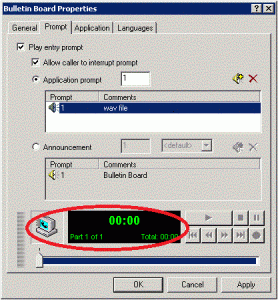I recently had an Avaya phone in a reboot cycle. It would boot up, then when it registered it would lock up and after a couple minutes reboot again. The display looked like it was up and running fine, but when you press the SPEAKER button I would get three beeps. This is typically what happens when a phone cannot get TCP/IP signalling traffic to the call server. And the night before we had some maintenance on that Ethernet switch so I immediately suspected a network problem.
Just in case, I did a “CLEAR” procedure on the phone. Then I swapped out the phone. Then I swapped out the patch cables (at both ends). Then I moved the phone to a different port in the Ethernet switch. No matter what I did, the phone locked up. Then I tried something I probably should have tried earlier – I logged in a different extension and it worked fine! Then I logged the “bad” extension into a different phone and it locked up!
Turns out the config file on the web server (1234_96xxdata.txt) was incomplete. Apparently it was related to the network after all! When the phone was writing its data file to the web server the previous night, the write operation was interrupted as the network guy shut off the Ethernet switch. The resulting data file was incomplete – it had about half the call log entries and a partial line at the end. But none of the important lines you’d expect in the file such as:
LOGTDFORMAT=128 Redial=1 Edit Dialing=1 Go to Phone Screen on Calling=0 Go to Phone Screen on Ringing=1 Call Timer=1 Visual Alerting=0 History Active=1 Log Bridged Calls=1 Audio Path=1 Personalized Ring=0 Handset AGC=1 Headset AGC=1 Speaker AGC=1 Error Tone=1 Button Clicks=0 Text Size=1 Contacts Pairing=0 Voice Initiated Dialing=1 Voice Dialing Help Counter=0 Personalized Ring Menu=0 Go to Phone Screen on Answer=0 Voice Initiated Dialing Language=
If the file were missing, the phone would use default values and create the file at the next backup. However, since the file was there, the phone processed it but ended up locking up because it was incomplete. In all my years working with these phones, I’ve never seen that before. I wouldn’t have thought it possible for the phone’s interrupted “HTTP PUT” operation to result in an incomplete file on the web server, but there you go. Hopefully this helps you.


